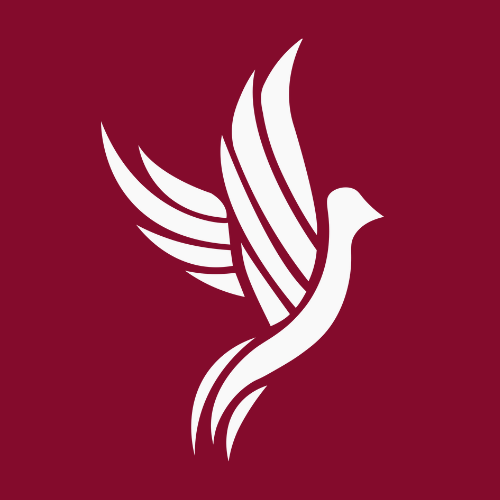Loyola undergraduate students participated in the annual Community Air Quality Research Experience, or CARE, to research air pollution in Chicago neighborhoods.
Loyola Students Conduct Research on Air Quality and Pollutants in Chicago
Loyola undergraduate students participated in the annual Community Air Quality Research Experience, or CARE, to research air pollution in Chicago neighborhoods, specifically with regard to socioeconomic demographics and proximity to industrial facilities, according to the program’s website.
School of Environmental Sustainability professor Dr. Ping Jing created CARE with the help of her colleague Dr. Tania Schusler and partners from Colorado State University to combine scientific research with environmental justice, according to Schusler.
In the CARE project, undergraduate students conduct research on air quality, particularly by observing levels of fine particulate matter — or PM2.5 — which has negative health effects, according to Schusler.
CARE is designed for a cohort of about eight students to begin orientation with the program in the spring before completing one month of intense research in the summer, according to Schusler. She said the group spends a lot of time together during their research, resulting in students and faculty forming close relationships.
“They’re committed to doing scientific research that can help to benefit local communities,” Schusler said. “A lot of them are really interested in environmental justice, and it’s been fun to work with students in a way that you get to know each other more as people.”
Schusler said Jing invited her onto the project after Jing failed to receive funding from the National Science Foundation. In their feedback, the foundation recommended Jing bring a social scientist onto the project, according to Schusler, who is an environmental social scientist.
“So at that point, she invited me to be involved,” Schusler said. “We rewrote the proposal addressing other comments that had come from the reviews, and so I’ve been a part of the project since the start of the current CARE project.”
Jing declined The Phoenix’s request for a comment.
Schusler said CARE partners with two community environmental organizations in Chicago, the Edgewater Environmental Coalition and the Southeast Environmental Task Force. She said one of her main roles in CARE is to act as a liaison between these groups and the project.
Schusler said CARE received funding for the purpose of providing opportunities for students from a wide range of diverse and typically underrepresented social identities in order for students to engage with science and to move into scientific careers, specifically in geosciences and atmospheric sciences. Students in CARE must undergo an online application process to be accepted into the cohort, according to Schusler.
Nora Hartnett, a graduate student assistant for CARE, said she assists students with their individual projects which all revolve around PM2.5 levels throughout Chicago.
Students set up low-cost air quality monitoring devices called PurpleAir throughout the city to track levels of PM2.5, according to Hartnett. Hartnett said students chose to study PM2.5 levels in relation to variables such as elevation, traffic, income levels of Chicago neighborhoods or minority neighborhoods.
Sherelyn Venuso, a December 2023 graduate of environmental science and member of the 2023 CARE cohort, said she conducted research on the relationship between PM2.5 levels and racial status and socioeconomic patterns like income.
Venuso said she found households with lower median income were more exposed to air pollution than households with higher median income. She said her research also showed a weak correlation between minority populations present in a neighborhood and higher levels of air pollution.
“I think it’s really interesting seeing the intersection between science or environmental science and health,” Venuso said. “Especially learning how different groups are affected in different ways. I think it’s very important to acknowledge that so we can focus on which group need help the most.”
Venuso said CARE focuses on intersecting its research with the community’s needs to reach a common goal of bettering the environment. She said the next step in environmental science is to pay special attention to why certain groups are more affected than others and how policy can alleviate those areas.
Thomas Crabtree, a third-year environmental policy major and member of the 2023 CARE cohort, said he researched the impact of wildfire smoke on air pollution in the Chicago region.
Crabtree’s research showed the South Side of Chicago generally experiences worse air quality, but wildfire smoke increases PM2.5 levels throughout the entire city.
Crabtree said he chose to join CARE because of its commitment to engaging with the Chicago community and partnering with organizations who are passionate about environmental justice.
“I do think there can be an impact on these sorts of hyper-local scales and neighborhood scales within the city of Chicago,” Crabtree said. “There’s now a lot of very consistent data accessible to the people of Edgewater, the South Side, about their own air quality, so hopefully it raises awareness.”
Crabtree said he hopes people involved in environmental advocacy are able to use the results of CARE to develop policy and enact change to better protect health in the community.
Hartnett said the overall finding of the students’ research as a collective was PM2.5 air pollution is a major problem within Chicago communities.
“I think the next step is really just education,” Hartnett said. “Helping the community understand why changes are happening, why different pollutants have different harms that come from them, how you can protect yourself and your loved ones, which groups are more affected than others.”
In the fall semester, students presented their research at a scientific conference and community groups, according to Schusler.
Schusler said CARE isn’t accepting applications in 2024 since CARE’s current funding is ending. She said the group is using this year to analyze what worked well and what didn’t before deciding the future direction of CARE and seeking funding.
Featured image courtesy of Lukas Keapproth / Loyola University Chicago
-

Julia Pentasuglio is a second-year majoring in multimedia journalism and political science with a minor in environmental communication and is one of two Deputy News Editors for The Phoenix. Julia previously interned on the Digital Media team at North Coast Media, a business-to-business magazine company based in Cleveland, Ohio. She has also written freelance for The Akron Beacon Journal. Outside of her love for news and journalistic storytelling, Julia enjoys camping, biking, skiing and anything she can do outside.
View all posts




